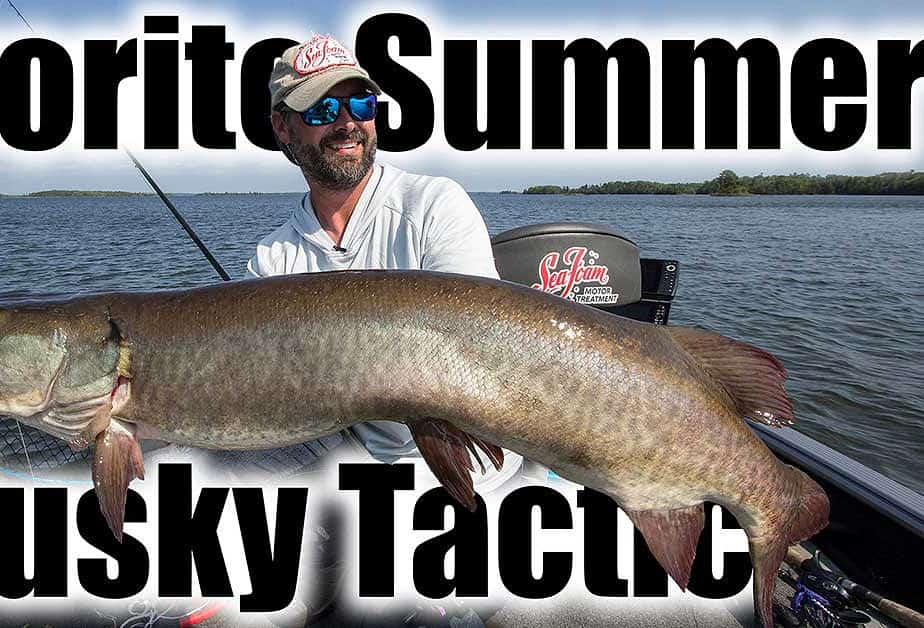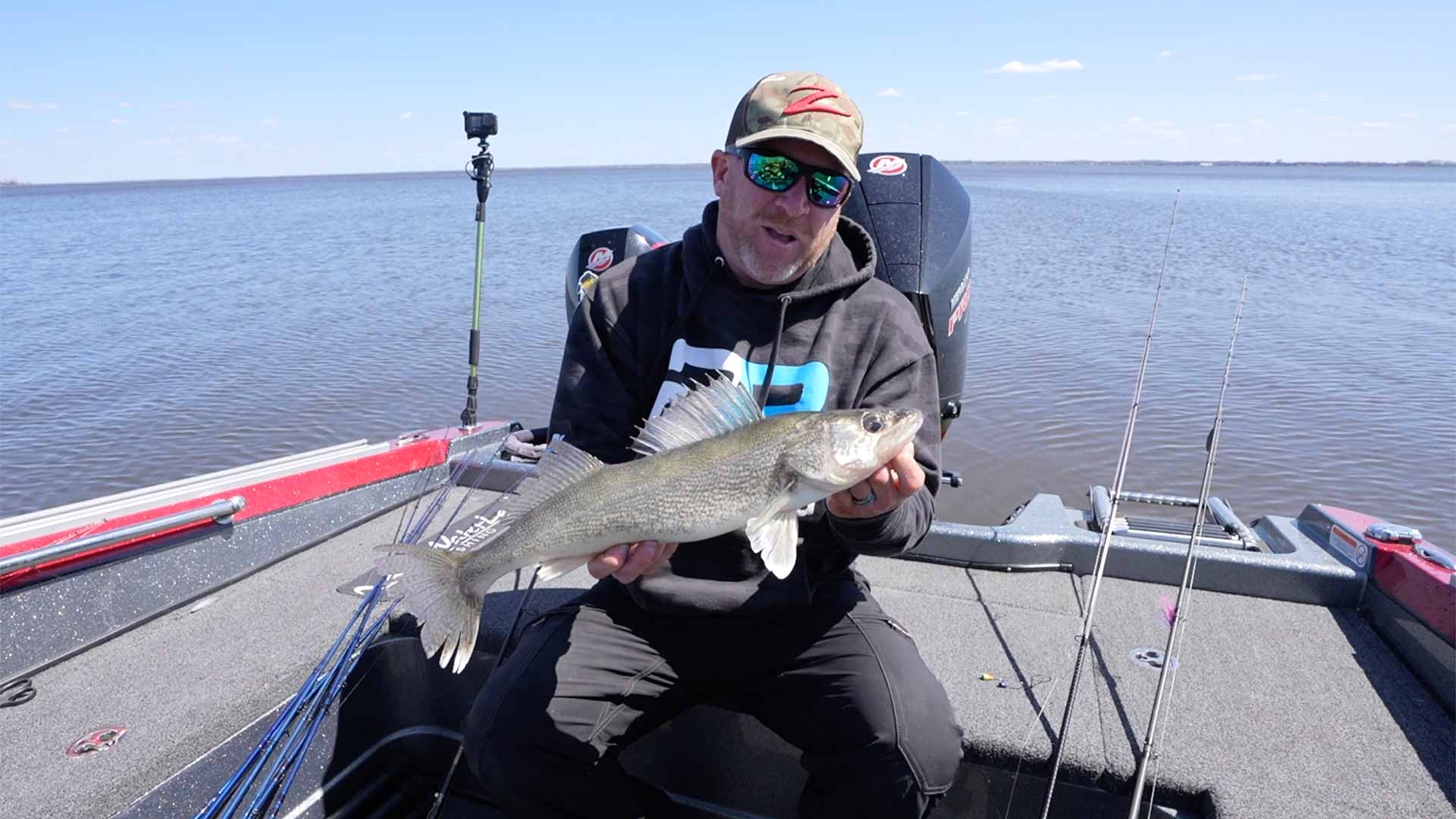It’s hard not to get excited about summer muskies. They are big, aggressive and ready to eat! If you hate slow, lethargic finesse fishing, then now is the time to be on the water hunting for these monsters. To help you get the most out of your summer musky fishing experiences, we reached out to six of the top musky pros in the Upper Midwest and asked them one simple question:
What’s your favorite tactic for summer muskies?

Lee Tauchen – leetauchen.com
During hot summers, I’ve had a lot of success fishing at night. There have been years where I’ve become a vampire, especially when I’m spending time on some of the premier, harder fished waters. There’s basically one key to having success with muskies at night: Fish slow and methodically. My favorite bait for these situations would be an Esox Assault double 9 bucktail, the other would be the FlapTail surface bait from Lee Lures. During the summer, I’m usually looking for weeds in July and rocks in August and beyond. The weeds I’m targeting are typically in 7-9 feet and the rocks are in 3-8 feet.
This might sound counterintuitive, but one of the benefits of musky fishing at night is vision. Think of every fish you see during the day that might have bit if it didn’t see the boat. Well, once it’s nighttime, they DON’T see the boat. That alone will put more muskies in your boat during the summer months.
On the flip side, when you’re struggling with cool water temps during the summer, the sunny midday hours might just be the ticket. Remember: In the daytime vs nighttime discussion, it’s all about relative water temperature. My two go-to techniques for summer muskies during the day are husky-sized Medusas and weighted bucktails. The key is to use baits that run a little bit deeper in the water column. I think the #1 mistake musky anglers make overall is fishing too high, too often. Another bait I’ve been having a lot of success with this summer is a paddle tail swimbait from Chaos Tackle called the Poseidon. They are releasing it at the Chicago Musky Expo this winter, so keep an eye out!
One thing to pay attention to while you’re out on the water is wind. Wind can create current in the lake that will set up feeding muskies in specific areas. Look for current lines that show themselves on the surface of the water, whether that be in the form of slick spots or foam lines. When it’s calm, the fish tend to spread out more, but when it blows, they like to key in on certain locations. That’s probably the biggest thing people miss out on when they are out musky fishing. Fish the foam!
Jeremy Smith – Angling Edge TV
Watch the video above to see Jeremy’s full take on summer muskie fishing tactics. Overall, his favorite technique for this time of year is “speed”. It’s more of an overall approach/mentality than a specific tactic. There are several baits you can use to achieve “speed”, but Jeremy likes to employ the tried and true bucktail which is “probably the greatest musky lure of all time”. He likes the Blue Fox Super Bou with big blades; double 8’s, double 9’s, and double 10’s. He’ll throw it on an 8’6″ to 9’0″ St. Croix Legend Elite rod and a Daiwa Lexa HD reel, fishing it fast and covering water. Watch the video to find out his go-to bait for converting followers into biters.
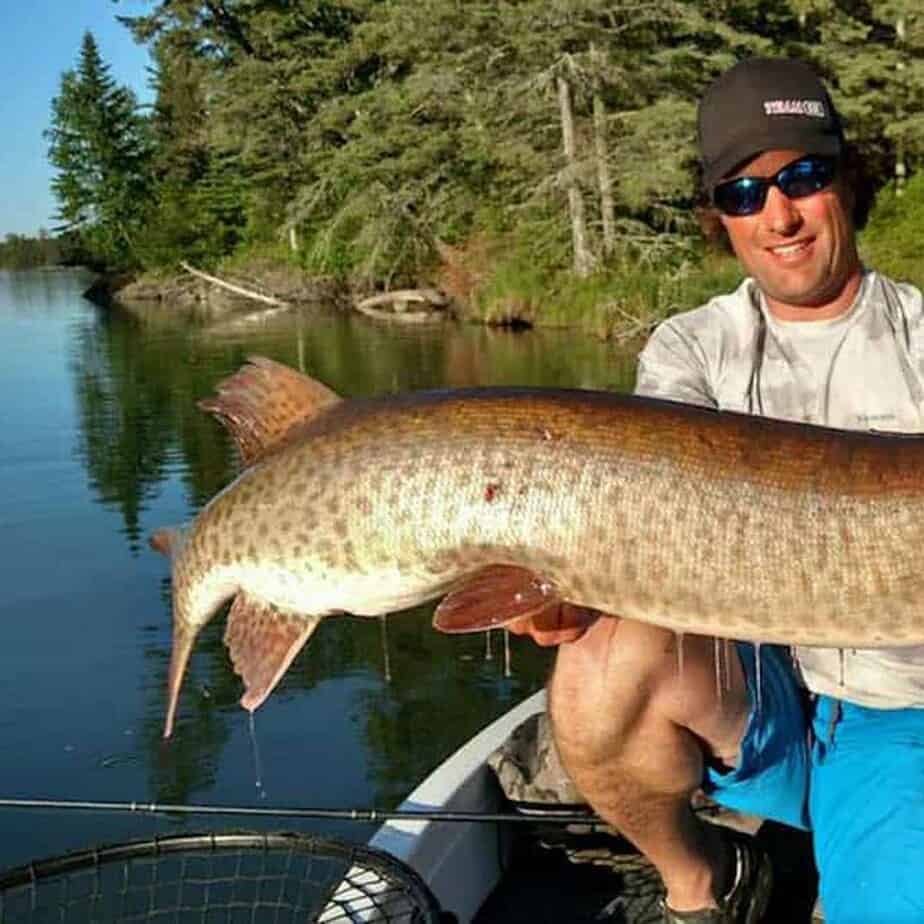
Luke Ronnestrand – Vermilion Dam Lodge
Without a doubt, my go-to technique for summer muskies is burning bucktails. The whole idea is that you’re covering as much water as you can. Lake Vermilion, where I spend most of my time, has mazes of structure that can be holding fish, so it’s important move, move, move and not spend too much time in any one area. I like to fish a variety of different cover, but as a rule of thumb, weed beds and sand tend to produce better on calm, sunny days, while rock structures will yield better returns when the wind is blowing.
I use a wide variety of bucktails during the summer. Here are a few of my favorites: the Double Showgirl and the Jr. Double Cowgirl from Musky Mayham, the Triple Bladed Apache from MuskyFrenzy with #8 blades, the Shumway Flasher, the Ghosttail 7, and a #5 Blue Fox Vibrax. My go-to colors are black and nickel, black and chartreuse, black with black blades, and brown and gold. One important note with color selection: Just like anything, it’s important to change up colors periodically to see what the fish want. That said, don’t change out baits TOO quickly. If you haven’t tried a certain presentation during a prime feeding window, you haven’t really given it a fair shake. Another thing that’s critical is having a good reel that will make winding and grinding as painless as possible. My perfect reel for this presentation is the Daiwa Lexa HD. It’s a tough reel with a high-speed gear ratio that picks up line in a hurry.
For me, there’s two big keys to having success with bucktails: 1. Vary your retrieve. A fish’s mood can change from hour-to-hour, so it’s important to experiment with different speeds. Sometimes they want it burning, other times they want it a little bit slower. Pay attention to what you’re seeing on the water and you’ll boat more muskies this summer. 2. Another big thing is being consistent with your figure 8’s. I figure 8 on EVERY SINGLE CAST. You can’t always see a big musky following your bait, but that doesn’t mean they aren’t there. I can’t tell you how many fish I’ve caught that I never saw until they were chasing my figure 8. It’s important to practice your figure 8 until it becomes second nature. When it’s crunch time and you have a 50-inch musky tailing your bait, you don’t want to be thinking about your technique, you want it to be muscle memory.
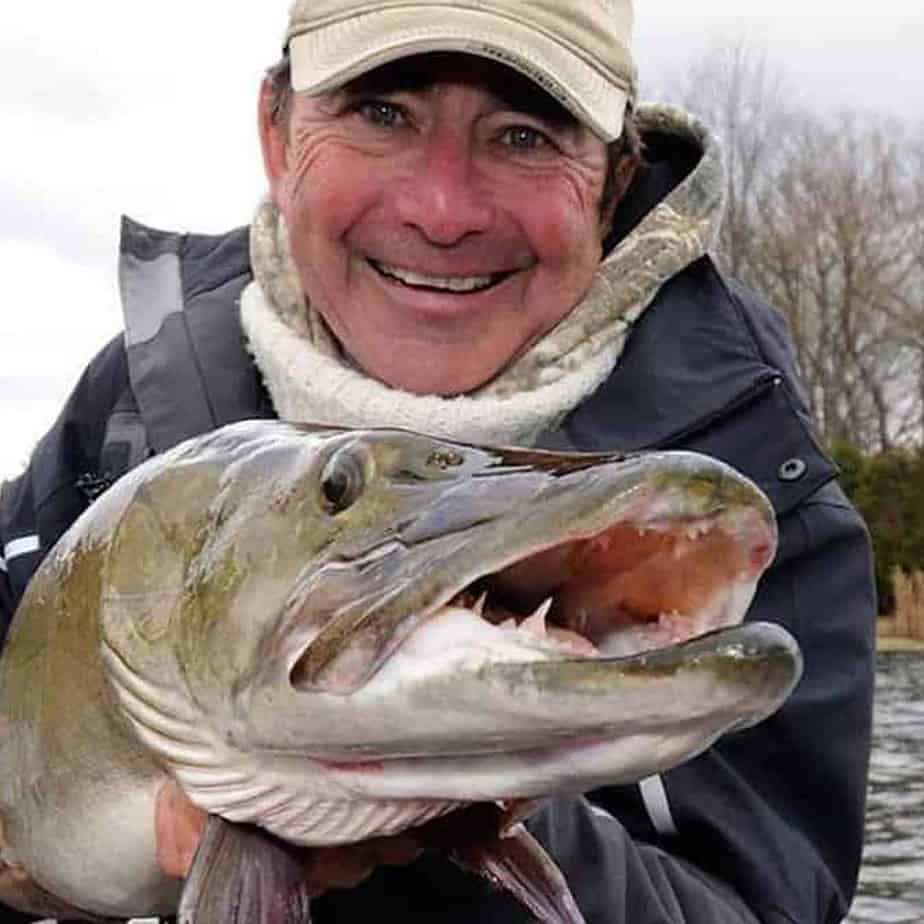
Gord Pyzer – Outdoor Writer
There is no more exciting way to catch muskies than on topwater lures and no better time to do it than in the heat of the summer.
But there is another reason why throwing surface lures at this time of the year is so effective. You can pitch them over the thickest weeds and shallowest rock cover where big toothy critters are roaming, and never get hung up, disturb the zone or spook the fish.
But there is a lesson most big toothy critter anglers need to learn and that is to slow down – way down – and not overwork their lures. Too many anglers are under the mistaken impression that they need to wake up the neighborhood and draw attention to their lure sitting on the surface. But believe me, every muskie within 100 yards saw and heard your lure land.
Remember, you’re entering their domain and they’re acutely aware of everything that is going on.
About the only time I pick up the pace is when I spot a big fish suddenly pull in behind my surface lure and start stalking it. I’ll superimpose myself into the lure and imagine that I’m a mouse, muskrat, duck, injured fish, or some other creature that knows it is about to be eaten and is trying to flee.
It is why summer is my favorite time of the musky season and using topwater lures are my favorite way to catch them.

Jeff Andersen – Big Tooth Tackle
Once we enter the heat of the summer, I like to fish hard and fast and cover as much water as possible, as quickly as I can. With the warmer water temperatures we see this time of year, muskies need to feed more often to make up for the changes in their metabolism. This meaning longer and larger feeding windows, which translates to more opportunities to contact fish if you’re willing to move quickly and hit several spots. When I’m looking to cover a ton of water during the summer, my go-to bait is the Big Tooth Mini Juice bucktail in the Honey Bear color. With it’s smaller blade configuration, I’m able to fish it quickly and efficiently all day long.
Generally, I’m throwing natural colors; black, brown or even white. I’ll pair it with blades that shine in the sun — gold is my favorite. One thing I can’t stress enough is having a fast moving reel like the Abu Garcia Beast that allows you to move the bait at a super fast pace without getting fatigued.
Sound can make a huge difference when you’re fishing heavily pressured waters like Mille Lacs Lake and Leech Lake. One thing we’ve been messing around with lately has been using different blade combinations to manipulate the sound our bucktails put off in the water. One of my new favorite combinations is a Mag 8 Colorado blade paired up with a #6 Colorado blade. We’ve implemented some of our best blade combinations into our new Big Tooth Sound Science line.
The primary spots that I tend to target are shallow boulder-style rock structures that top out at 3-4 feet and drop down to about 6 feet. On the lakes that I fish, I have almost all of these locations scoped out and marked on my Humminbird, which makes it extremely easy to put my baits right on the money spot even during rough weather conditions. My second choice for summer muskies is an 8 foot cabbage edge. Most anglers will position their boat in deep water and throw up into the weeds. I recommend doing the exact opposite. Find the inside weed line, position your boat just outside of the weeds, and throw out towards deeper water. I’ve found that when weed dwelling muskies get a lot of pressure, they will push back towards that inside weed line. All in all, you’re giving the fish a different look than they are used to seeing and, often times, that can trigger a strike.
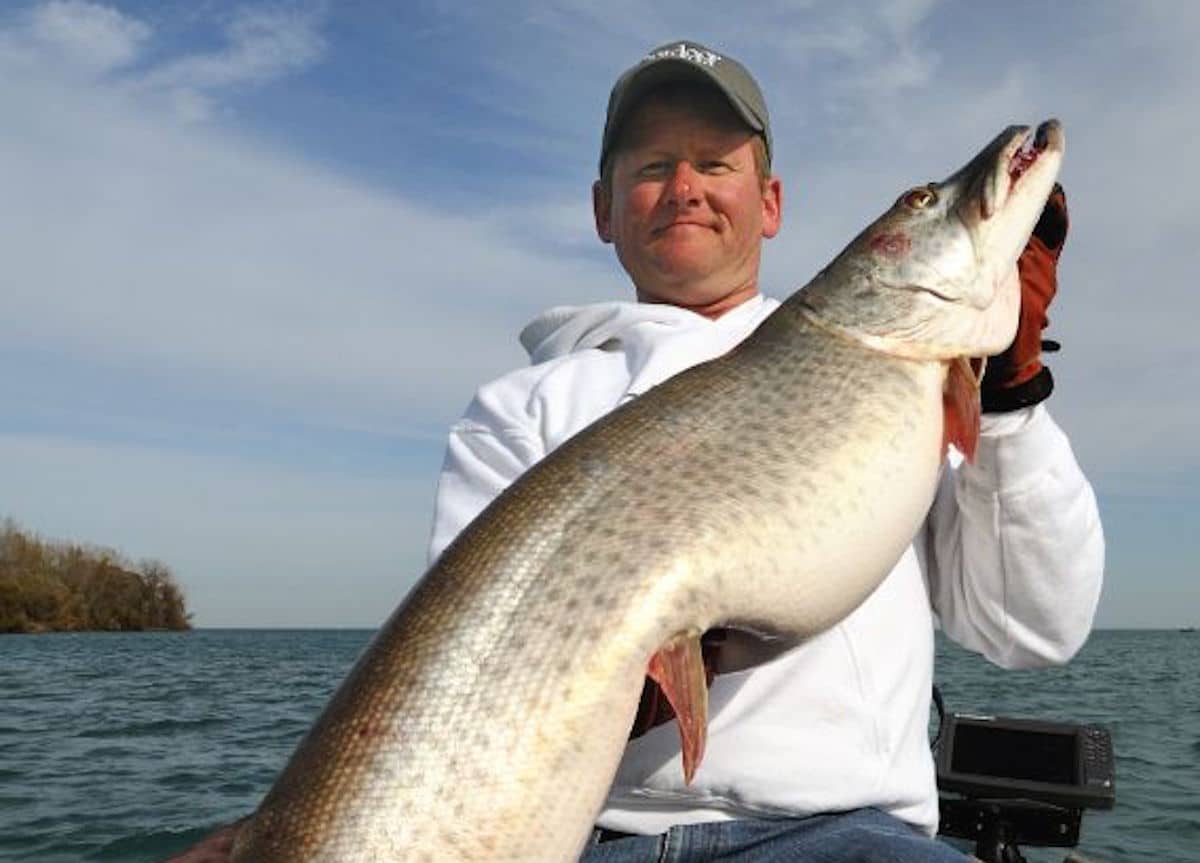
Jon Bondy – Bondy Bait Co.
During the summer, muskies on Lake St. Clair become pelagic, which means they are cruising around in open water looking for food, and not relating to any specific structure or cover. What I do to find and catch these fish is fan-casting swimming baits and retrieving them through the middle of the water column. My two favorite baits for these situations are the Bondy Royal Orba (video) and the Bondy Hot Orba (video). What’s unique about these baits is they both have double Colorado blades on the back — they are the only baits on the market with this feature, and they look great in the water. A few of my favorite colors are the standard black with an orange tail, pearl, and a color we have called “Area 51”, which is bright chartreuse with an orange tail.
Most anglers like to impart a lot of crazy action into their baits, but I don’t believe that’s necessary. If there’s a little chop on the water and the fish are biting, you won’t have any issues getting bites with a straight swimming retrieve right in the middle of the water column; no fancy rips or pulls needed. That said, if conditions turn flat calm and the bite is slow, I’ll go to a jigging-style bait like the Original Bondy Bait or a Bondy Mini Wobbler. I’ll cast it out and then jig it back to the boat, making big hops through the open water and reeling up the slack quickly on the way down to keep the bait off the bottom. When the surface is calm like this, I’m aiming to make a good hard splash with my bait on the cast — I can promise you that every musky within a 50-yard radius of that splash will know your bait is there and occasionally, you’ll even get bit before you’re able to start your retrieve.
For most people, searching for pelagic muskies in the open water can be difficult and intimidating. What I look for is sections of the water that have a little bit of a rise in the bottom, whether it’s a gradual rise over 100 yards or it’s a hump. When there’s current going through the lake, whether it’s natural or from the wind, the shallower water will create what I like to call a “pinch point”. This actually compresses the amount of space the water can be in, which forces the current to speed up a bit to get past the rise in the bottom. That small increase in current speed can make a huge difference. If I find an area that comes up six inches over 100 yards, that’s where I’ll be drifting my boat.
Bonus Info!
Hungry for more information on summer muskies? — One video I highly recommend checking out is “Flatline Trolling for Muskies” where Jeremy Smith and James Lindner breakdown how to have success flatline trolling for big summer all year long. It’s a must-watch if you enjoyed this article. On the other hand, if you’re looking for some tips on modifying your bucktails, make sure to check out our video “Modifying Bucktails for Muskie Fishing Success“. It’s been one of the most popular musky videos on our site to date.
